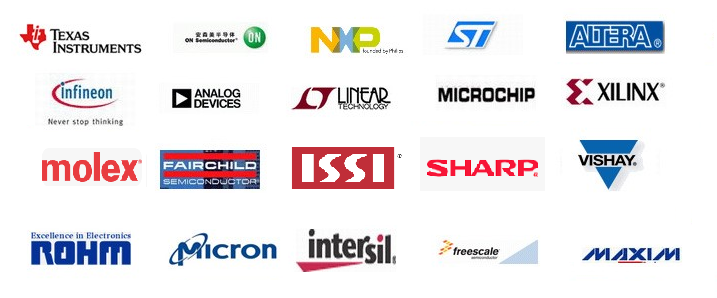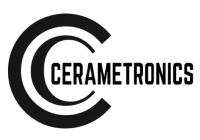Share

Week 44, 2025 Electronics Component Industry Highlights
📅 (2025/10/27 – 2025/11/02)
🌏 Global Semiconductor & Electronics Industry Overview
During the week of October 27 to November 2, 2025 (Week 44), the global semiconductor and electronics industry continued to be driven by the AI boom, featuring intensified competition, advances in chip manufacturing, and geopolitical disruptions shaping supply chains.
Key themes included the fierce AI chip race, strategic shifts among leading foundries, and price pressure in passive components and rare metals.
🤖 AI Chips and Market Dynamics
-
AI competition heats up:
Qualcomm announced plans to launch its first AI data center processor in 2026, joining the high-stakes race dominated by NVIDIA.
Meanwhile, Amazon Web Services (AWS) posted robust growth, alleviating concerns about lagging behind in AI infrastructure. -
AI investments remain strong:
Market enthusiasm for AI continues to surge, driving semiconductor stock performance.
Tech giants like Amazon and Microsoft are preparing large-scale capital expenditures in 2026 to expand data center capacity for AI computing — a move expected to further boost demand for NVIDIA, AMD, and Broadcom chips. -
Market growth forecast:
The global semiconductor market is projected to grow 17.6% in 2025, reaching nearly $800 billion in total revenue.
Computing chips are leading the surge, with revenues expected to jump 36% year-over-year, underscoring AI’s transformative economic impact.
🏭 Advanced Manufacturing and Foundries
-
TSMC maintains leadership:
TSMC expanded its global foundry market share to 70% in Q2 2025, driven by strong sales of AI GPUs and smartphone processors.
Its next-generation 2nm process remains a key focus, while its mature 3nm nodes continue to anchor AI hardware production. -
Samsung’s catch-up strategy:
Samsung Foundry is strengthening its position through new contracts with Apple, NVIDIA, and Tesla, leveraging 2nm process technology to challenge TSMC.
The company also announced plans to mass-produce HBM4 memory by late 2025, targeting AI accelerators and data center applications. -
Intel faces manufacturing hurdles:
Intel’s 18A process is facing yield challenges that could impact profitability for high-end notebook CPUs, putting it at a disadvantage against TSMC’s more mature process technologies. -
Equipment market sees record growth:
The semiconductor equipment market is expected to reach $125.5 billion in 2025, marking a new record.
ASML remains central to this growth with strong demand for its EUV lithography systems, though it has adopted a cautious stance on 2026 sales to China due to export restrictions.
Meanwhile, Applied Materials and Lam Research continue to benefit from AI-driven orders while diversifying into automotive and power electronics.
🌐 Supply Chain and Geopolitical Shifts
-
Passive component prices rising:
Boosted by AI demand, a recovering PC market, and rising silver prices, passive component manufacturers have launched a new round of price adjustments — with price increases of up to 20% expected in Q4 2025. -
Rare metal supply under pressure:
The supply of critical minerals continues to tighten as China’s export controls and rising EV and manufacturing demand push rare earth prices higher, prompting Western nations to seek alternative supply chains. -
Regionalization accelerates:
The global supply chain continues to shift from globalization to regionalization, driven by tariffs and geopolitical tensions.
Notably, US startup Substrate introduced a new chip lithography tool aiming to challenge ASML’s dominance, reflecting the push toward supply chain diversification and technological sovereignty.
📈 Top Demand Surges (Highest Demand Models)
This week’s component demand showed a strong rebound in power MOSFETs, ESD diodes, and small-signal discretes, while MCUs and Flash memory remained stable:
-
BUK7K6R2-40E (+948.20%) led MOSFET demand, driven by automotive power control.
-
PBHV8540T (+532.23%) and BC856B-Q (+529.30%) maintained strong transistor segment performance.
-
BUK9K29-100E (+499.33%) and PMEG2020EJ (+490.14%) saw growth in switching and rectifier circuits.
-
OPA690IDBVR (+464.76%) gained in high-speed amplifier applications.
-
PESD2ETH-AXR (+428.89%) remained strong in Ethernet and transient protection.
🔍 Weekly Demand Volume Leaders
-
STM32F103C8T6 (-10.81%) retained its MCU dominance.
-
PESD1LIN (+71.60%) and BAV99 (+47.10%) sustained protection and switching diode demand.
-
BUK9K17-60E (+356.05%) posted one of Q4’s largest MOSFET rebounds.
-
W25Q128JVSIQ (+33.44%) confirmed ongoing Flash memory restocking.
-
BAT54S, BAS316, and BAV99-Q (+18% to +153%) reinforced discrete component recovery.
-
ICM-42688-P (+30.23%) and BC817-40 (+33.24%) reflected improving MEMS and transistor demand.
💸 Top Price Movements
Top Increases:
-
PESD2V0Y1BSFYL +300.00% (ESD surge)
-
BAS321-Q/S400, BCX56-16-Q, FDV301N (~+233%)
-
TPS22995HQDDCRQ1, PMEG3005EB, BCX56-16 (+215–225%)
-
TLP281GB, SMBJ18CA, BC817 (+200%)
Top Declines:
-
BCM84891LB0KFEBG (-81.41%), PMEG6020ER (-78.76%)
-
AO3400, ULN2803A, SN75LBC184DR (-65% to -77%)
-
BUK9K17-60EX, US1M, 2N7002DW (-55% to -58%)
📦 Inventory Trends
Top Surges:
-
BC847BPN-Q +29,473.68%, BZX84-C18-QR +22,840.00%, BAS521-QX +22,500.00%
-
BAS16J,115 +21,416.80%, BAS321-QX +20,100.00%
-
MAX485ESA+ +16,372.37%, PMEG4002EJ +8,994.71%, PCMF1HDMI2SZ +7,437.69%
Top Declines:
-
AD9755ASTZ (-99.84%), TPS552892RYQR (-99.83%)
-
HMC468ALP3E, MT53E1G32D2FW-046 WT:C, PMV37ENEA (~-99.7%)
🧠 Most Demanded Brands
Top Global Brands:
TI • ADI • onsemi • Nexperia • STMicroelectronics • Microchip • NXP • Galaxy • UMW • HXY MOS
Fastest Growing Brands:
Lexar (+161,600%) • HY Electronic (+10,481%) • MDE Semiconductor (+8,478%) • U-Blox (+3,494%) • Mini-Circuits (+1,640%) • AMD (+1,443%) • Intersil (+348%) • Eaton (+189%) • WAGO (+118%) • Renesas (+108%)
📊 Category Demand Momentum
Highest Demand Categories:
Microcontrollers, Rectifiers, MOSFETs, Operational Amplifiers, DC-DC Converters, Linear Regulators, Bipolar Transistors, Flash, FPGAs.
Fastest Growing Categories:
-
Analog Multipliers/Dividers +39.95%
-
Regulator Diodes +38.23%
-
Embedded System Development Boards +37.64%
-
Digital Bipolar Transistors +34.56%
-
EMI Filters, Optical Encoders, and Zener Diodes (+24–27%)
🧭 Cerametronics Weekly Insight
Week 44 highlighted continued demand in discrete, analog, and MOSFET sectors, supported by the AI-driven semiconductor expansion and resilient data center investment.
The market also saw price pressure in passive components and increasing rare metal costs, signaling early Q4 inflationary risks.
At the same time, TSMC and Samsung continued to dominate the foundry landscape, while Intel’s 18A yield challenges emphasize the strategic gap between top-tier fabs.
The move toward regional supply chains and equipment innovation (led by startups like Substrate) underscores the global trend toward technological independence.
📊 Outlook:
Expect steady AI hardware demand, stable MCU sourcing, and robust growth in automotive and industrial MOSFETs into early November.
STAY IN THE LOOP

